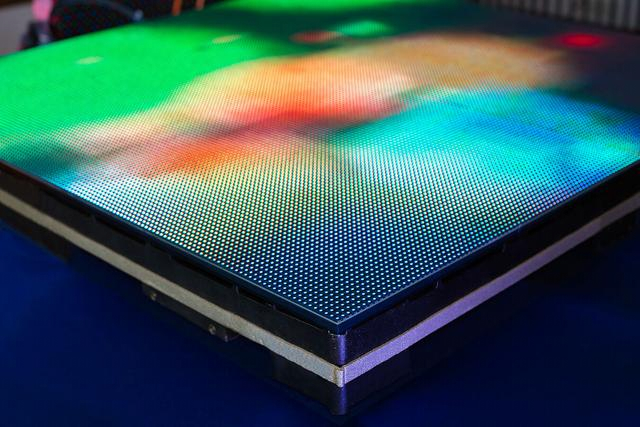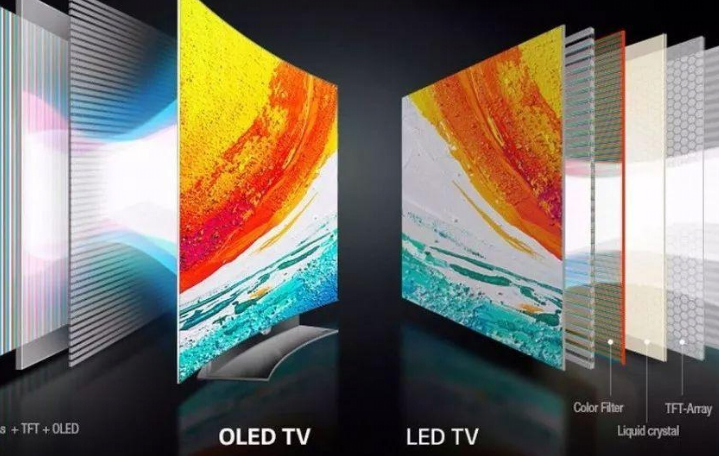OLED vs. LCD: Which is Better?
By Iris Han
With the continuous advancement of technology, liquid crystal display technology has also developed rapidly, among which OLED (Organic Light Emitting Diode) and LCD (Liquid Crystal Display) are the two most common display technologies on the market. Do you know the difference between LCD screens and OLED screens? Or in other words, compared to LCD screens, what are the advantages of OLED screens? This article will give you a detailed introduction to the differences between OLED screens and LCD screens. Especially their advantages and characteristics in different aspects.

1. OLED screen and Liquid crystal screen
The OLED screen is composed of organic light-emitting diodes, and each pixel can emit light independently. It uses organic materials and electric current to emit light without the need for a backlight. By adjusting the size of the current, various brightness and color display effects can be realized.
The liquid crystal screen uses liquid crystal molecules to change the polarization state of light. Under the action of an electric field to control whether light passes or not. The LCD screen needs a backlight to provide light. The backlight is adjusted by liquid crystal molecules to allow light to pass through the pixels to display images.
2.The imaging principle of OLED and LCD
OLED screens, also known as organic light-emitting diode displays, consist of a layer of light-emitting material embedded between two electrodes. When the voltage is input, the carriers move through the organic layer until the electron holes are recombined. This achieves energy conservation and releasing excess energy in the form of light pulses. At this point one of the electrodes is transparent and the emitted light can be seen. Simply put, the screen is self-illuminating. According to the driving form, it is divided into PMOLED (passive driving type) and AMOLED (active driving type).
AMOLED is characterized by high brightness, high resolution, high color performance, and low power consumption. Compared with AMOLED, PMOLED has lower cost and faster response speed. Bbut it is limited by the size of production and is mainly used in micro-equipment.
The display principle of the LCD screen is mainly to generate an electric field effect through the twisted nematic molecules of the liquid crystal. Thereby controlling the brightness and darkness generated by the light source transmission during the power switch process. So as to display the image, and the color display mainly depends on the color filter. To put it simply, the screen does not emit light by itself, but relies on the backlight layer to emit light and form a color image through the color film.

3. Differences in display effects
Contrast: OLED screens can offer higher contrast because each pixel can emit light independently for true pure blacks, resulting in deeper, richer blacks. When the LCD screen displays black, because the backlight cannot be completely turned off, there will be a certain amount of backlight leakage, resulting in black performance that is not as good as that of OLED screens.
Viewing angle: The viewing angle range of the OLED screen is wider, and better display effects can displayed in both horizontal and vertical directions. However, due to the limitation of liquid crystal molecules, the viewing angle range of the LCD screen is relatively narrow, and changes in brightness and color may occur under different angles.
Color performance: OLED screens could provide more vivid and true color performance, because each pixel can emit light independently, and the brightness and color of each pixel can be precisely controlled. However, LCD screens are relatively limited in terms of color performance. and due to the influence of liquid crystal molecules and backlight, it is difficult to achieve the color reproduction effect of OLED screens.

4. The difference between power consumption and life
Power consumption: When the OLED screen displays black, because it can completely turn off the pixels, it can greatly reduce power consumption and save power. However, since the LCD screen requires the backlight to be on all the time, no matter what content is displayed, it will consume a certain amount of energy.
Lifespan: The lifespan of an OLED screen is relatively short, especially when displaying high brightness. It is prone to problems such as pixel aging and color drift. The LCD screen has a longer life under normal use conditions.
There are significant differences between OLED screens and LCD screens in terms of construction principles, display effects, power consumption, and lifespan. OLED screens have advantages such as higher contrast ratio, wide viewing angle, bright color performance and low power consumption. But their lifespan is relatively short. The LCD screen is relatively stable, with the characteristics of lower cost and longer life. When choosing, you can weigh and choose according to your personal needs and usage scenarios to obtain the most suitable display experience for you.
It is clear that the price of the OLED screen is relatively high. And due to the special manufacturing process, the power consumption is also relatively high. So the cost and battery life should be considered when choosing. To sum up, if you need a screen with a more stable display effect and lower power consumption,you could choose an LCD screen. If you need more vivid display effect, you can choose an OLED screen.
FAQs:
